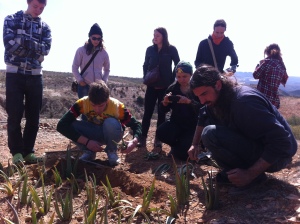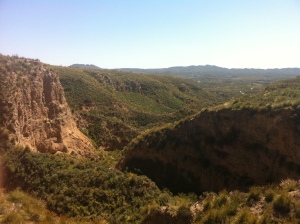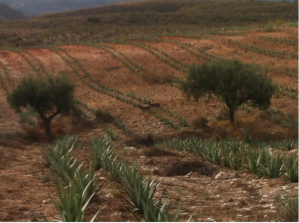Sunseed News
 This mycorrhiza trail is part of Sunseed’s ongoing efforts to combat desertification through increasing vegetation cover and reducing evaporation and run-off. One of the challenges in repairing ecosystems in degraded semi-arid soil is the improvement of the rhizosphere along the vegetation. As plants in harsh environments tend to be especially dependant on mutually symbiotic relationships, it is considered important to re-generate microbiological activity in the soil to achieve overall improvements in the ecosystem. The rhizobial bacteria and the mycorrhiza in the soil grows on the roots allowing it to receive sugars from the plant, while simultaneously providing the plant with mineral nutrients. It can also protect the plant from disease and stabalise the soil surrounding the roots. The mycorrhiza community grows as the network of host roots grow, and can colonize other plants in the same area.
The leguminous shrub Retama sphaerocarpa is tolerant to drought prone, nutrient poor and alkaline soil. It is a good plant to facilitate succession because it creates a micro-climate in which a diverse under-story can survive. It has also been shown that succession underneath the Retama sphaerocarpa can over time improve soil structure, nutrient and water content, moderate humidity and temperature in air and soil, increase plant diversity and boost microbial activity in the soil.
The aim of this trail is to develop a low-cost nursery trial of the use of mycorrhiza inoculum to increase the success of Retama sphareocarpa on germination and the future planting on eroded abandoned terraces.
To get the inoculum, we collect soil from mature healthy Retama sphareocarpa growing locally to bring a live culture of mycorrhiza into the nursery soil.
This mycorrhiza trail is part of Sunseed’s ongoing efforts to combat desertification through increasing vegetation cover and reducing evaporation and run-off. One of the challenges in repairing ecosystems in degraded semi-arid soil is the improvement of the rhizosphere along the vegetation. As plants in harsh environments tend to be especially dependant on mutually symbiotic relationships, it is considered important to re-generate microbiological activity in the soil to achieve overall improvements in the ecosystem. The rhizobial bacteria and the mycorrhiza in the soil grows on the roots allowing it to receive sugars from the plant, while simultaneously providing the plant with mineral nutrients. It can also protect the plant from disease and stabalise the soil surrounding the roots. The mycorrhiza community grows as the network of host roots grow, and can colonize other plants in the same area.
The leguminous shrub Retama sphaerocarpa is tolerant to drought prone, nutrient poor and alkaline soil. It is a good plant to facilitate succession because it creates a micro-climate in which a diverse under-story can survive. It has also been shown that succession underneath the Retama sphaerocarpa can over time improve soil structure, nutrient and water content, moderate humidity and temperature in air and soil, increase plant diversity and boost microbial activity in the soil.
The aim of this trail is to develop a low-cost nursery trial of the use of mycorrhiza inoculum to increase the success of Retama sphareocarpa on germination and the future planting on eroded abandoned terraces.
To get the inoculum, we collect soil from mature healthy Retama sphareocarpa growing locally to bring a live culture of mycorrhiza into the nursery soil.
 The seeds were pre-treated in terms to increase the % of germination. They were soaked in hot water for 2 hours.
The seeds were pre-treated in terms to increase the % of germination. They were soaked in hot water for 2 hours.
 Then sowed in 30cm tall biodegradable grow tubes to encourage vertical development of the taproot.
Then sowed in 30cm tall biodegradable grow tubes to encourage vertical development of the taproot.
 Now is important to have them in the nursery, were we can provide shade and water. The healthier we keep them, the better will be the transplanting in drylands.
Now is important to have them in the nursery, were we can provide shade and water. The healthier we keep them, the better will be the transplanting in drylands.

 Estos ensayos son parte de los esfuerzos continuos de Sunseed para combatir la desertificación mediante el aumento de la cubierta vegetal y la reducción de la evaporación y la escorrentía . Uno de los retos en la reparación de los ecosistemas degradados en suelo semiárido, es la mejora de la rizosfera así como la vegetación. Como las plantas en ambientes hostiles tienden a ser especialmente dependientes de las relaciones simbióticas entre sí, se considera importante volver a generar actividad microbiológica en el suelo para lograr una mejora general del ecosistema. Las bacterias de rizobios y la micorriza en el suelo crecen en las raíces permitiendo la recepción de azúcares por parte de la planta, mientras que el hongo proporciona a la planta nutrientes minerales. También puede proteger la planta de enfermedades y estabilizar el suelo que rodea las raíces . La micorriza crece a medida que la red de raíces crece, y puede colonizar otras plantas en la misma zona.
El arbusto leguminoso Retama sphaerocarpa es tolerante a la sequía y propenso a suelos pobres en nutrientes y alcalinos. Es una buena planta para facilitar la sucesión , ya que crea un microclima en el que un diverso sotobosque puede sobrevivir. También se ha demostrado que la sucesión debajo de la Retama sphaerocarpa con el tiempo puede mejorar la estructura del suelo, nutrientes, humedad, moderar temperaturas y estimular la actividad microbiana del suelo.
El objetivo es el desarrollo de un vivero de bajo coste que permita la utilización de inóculo de micorrizas para aumentar el éxito de germinación y supervivencia de Retama sphareocarpa. Estos planteles, serán utilizadas en el futuro para la regeneración de terrazas abandonadas de cultivo de secano.
Para obtener el inóculo, recogemos suelo de una planta de Retama sphareocarpa madura y saludable que crezca localmente. Esto nos permitirá generar un cultivo vivo de micorrizas en el suelo del vivero.
Estos ensayos son parte de los esfuerzos continuos de Sunseed para combatir la desertificación mediante el aumento de la cubierta vegetal y la reducción de la evaporación y la escorrentía . Uno de los retos en la reparación de los ecosistemas degradados en suelo semiárido, es la mejora de la rizosfera así como la vegetación. Como las plantas en ambientes hostiles tienden a ser especialmente dependientes de las relaciones simbióticas entre sí, se considera importante volver a generar actividad microbiológica en el suelo para lograr una mejora general del ecosistema. Las bacterias de rizobios y la micorriza en el suelo crecen en las raíces permitiendo la recepción de azúcares por parte de la planta, mientras que el hongo proporciona a la planta nutrientes minerales. También puede proteger la planta de enfermedades y estabilizar el suelo que rodea las raíces . La micorriza crece a medida que la red de raíces crece, y puede colonizar otras plantas en la misma zona.
El arbusto leguminoso Retama sphaerocarpa es tolerante a la sequía y propenso a suelos pobres en nutrientes y alcalinos. Es una buena planta para facilitar la sucesión , ya que crea un microclima en el que un diverso sotobosque puede sobrevivir. También se ha demostrado que la sucesión debajo de la Retama sphaerocarpa con el tiempo puede mejorar la estructura del suelo, nutrientes, humedad, moderar temperaturas y estimular la actividad microbiana del suelo.
El objetivo es el desarrollo de un vivero de bajo coste que permita la utilización de inóculo de micorrizas para aumentar el éxito de germinación y supervivencia de Retama sphareocarpa. Estos planteles, serán utilizadas en el futuro para la regeneración de terrazas abandonadas de cultivo de secano.
Para obtener el inóculo, recogemos suelo de una planta de Retama sphareocarpa madura y saludable que crezca localmente. Esto nos permitirá generar un cultivo vivo de micorrizas en el suelo del vivero.
 Las semillas fueron tratadas previamente para aumentar el % de germinación. Fueron sumergidas en agua caliente durante 2 horas.
Las semillas fueron tratadas previamente para aumentar el % de germinación. Fueron sumergidas en agua caliente durante 2 horas.
 Seguidamente fueron sembradas en tubos biodegradables de 30cm de altura para fomentar el desarrollo vertical de la raíz principal.
Seguidamente fueron sembradas en tubos biodegradables de 30cm de altura para fomentar el desarrollo vertical de la raíz principal. Ahora es importante tenerlos en el vivero donde se puede proveer de sombra y un riego regular. Cuanto más sanos estén mejor será su futuro transplante en el campo.
Ahora es importante tenerlos en el vivero donde se puede proveer de sombra y un riego regular. Cuanto más sanos estén mejor será su futuro transplante en el campo.























 A seed mix of local plants was sown between the organic barriers and along the bio-rolls with some compost. Biomass was used to cover it and to reduce surface water flow and improve humidity retention and organic matter.
Last but not least, we have also used “Nendo dando” technique. This method consists of
A seed mix of local plants was sown between the organic barriers and along the bio-rolls with some compost. Biomass was used to cover it and to reduce surface water flow and improve humidity retention and organic matter.
Last but not least, we have also used “Nendo dando” technique. This method consists of 

















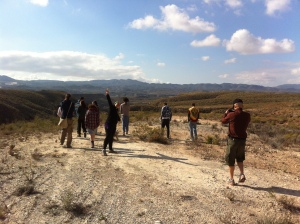
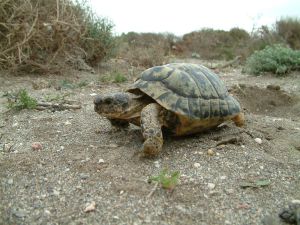
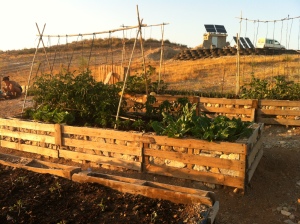


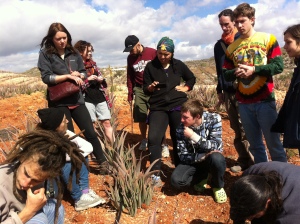 During this visit we even learned how to cut open the leaves and extract the shoots which we then replanted in a zone called “the nursery”, so as to continue the process of regenerating their plantation without the need to buy new plants.
During this visit we even learned how to cut open the leaves and extract the shoots which we then replanted in a zone called “the nursery”, so as to continue the process of regenerating their plantation without the need to buy new plants.
